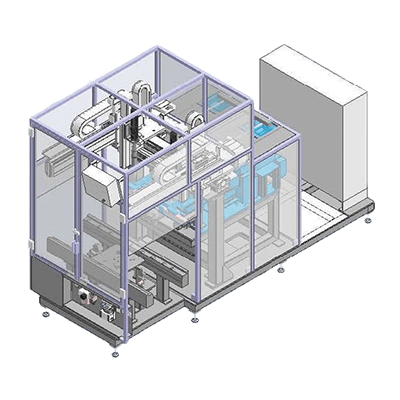What Are Cartesian Robots?

Cartesian Robots, also known as gantry robots, operate by moving along two or three orthogonal axes. Their straightforward structure makes industrial robots a common choice for automating various tasks across a wide range of industries.
Since they have at most three Cartesian coordinates, they can be made by hand and can be easily modified. Another feature is that the program that performs the work can be easily modified.
Therefore, if the work does not require complicated motions and involves monotonous movements, Cartesian Robots can be used to mechanize the work relatively easily.
Applications of Cartesian Robots
Cartesian Robots are mainly used in the manufacturing industry for simple tasks such as assembling and transporting parts. In this field, Cartesian Robots are often introduced because linear motion is sufficient to perform these tasks.
First, the line along which the parts will flow is determined. Then, by using a camera or other means, the work from assembly to transport is broken down and replaced by Cartesian Robots. The introduction of the system enables stabilization of productivity.
Specifically, Cartesian Robots are used for small precision mechanical parts, automotive parts, electronic parts for board mounting, as well as in the medical and pharmaceutical fields. In the food field, for example, specially processed arms can precisely grip and move delicate foods, such as tofu, which is fragile and difficult to handle.
The operating range of Cartesian Robots is simple and easy to understand compared to, for example, robots with 6-axis motion, and the price is favorable. Cartesian Coordinate Robots can be used stably even under severe conditions, such as in humid places or semiconductor factories where corrosive gases are used.
Principle of Cartesian Robots
The basic operation of Cartesian Robots is to slide a work arm along a linear guide to perform tasks such as assembly, transportation, and positioning.
Multiple units that move on a single axis are combined to perform work in a Cartesian coordinate system. In this case, since each axis of the robot can be moved simultaneously, many operations can be performed efficiently by superimposing linear movements.
Features of Cartesian Robots
1. High Degree of Freedom in Combination
Cartesian Robots have a relatively narrow operating range, but they can be combined with a high degree of freedom and can be easily adapted to the required specifications. Since their movements are simpler than those of other robots, they are easier to control, and it is possible to combine multiple Cartesian Robots.
By combining and coordinating with other robots, it is possible to perform many tasks, such as making some complex movements or incorporating processes such as material cutting
2. High Accuracy
Cartesian Robots can only perform simple linear movements, but the accuracy is higher. In particular, those using linear guides with ball screws and linear encoders can achieve highly accurate positioning.
3. High Rigidity
Cartesian Robots have fewer parts, which makes them more rigid. As a result, gaps and deformation are minimized, motion blur is reduced, and work is stabilized. In addition, the simple structure of the Cartesian coordinate robot allows for faster speeds and shorter cycle times.
4. Low Cost
Cartesian Robots, which can be manufactured with a simple structure and a small number of parts, are less expensive than articulated robots.
Other Information on Cartesian Robots
1. Disadvantages of Cartesian Robots
Cartesian Robots have disadvantages as well as advantages.
Complex work is impossible
It is difficult to perform complex tasks other than the combination of linear motion.
Large footprint
The disadvantage of Cartesian Robots is that they tend to have a large footprint because they can only move in a straight line and cannot be folded because they have no joints.
Difficult to enlarge
It is difficult to make Cartesian Robots larger in size while maintaining their accuracy and strength, due to cost.
2. Examples of Cartesian Robots
Manpower saving in conveyance work
Although an articulated robot was used to automate the conveyance of change after packaging, a durability problem arose. Cartesian Robots were adopted for this improvement, and good results were obtained. The risk of breakdowns was reduced and labor productivity increased by 1.4 times.
Automation of Nail Brush Manufacturing Process
Nail brushes were mostly handmade due to the complexity of the production process. In order to reduce the aging of workers and costs, six Cartesian Robots were introduced, and the cutting, temporary attaching, and gluing processes were performed by the robots. As a result, six workers were reduced to two, and labor productivity has increased 30 times compared to before the introduction of the robots.
Reduction of Burden and Efficiency of Hazardous Work
Cartesian Robots were used to replace heavy and potentially hazardous tasks that were being handled by humans. As a result, hazards were eliminated, efficiency was improved, and labor productivity was increased 1.4 times compared to the previous system.